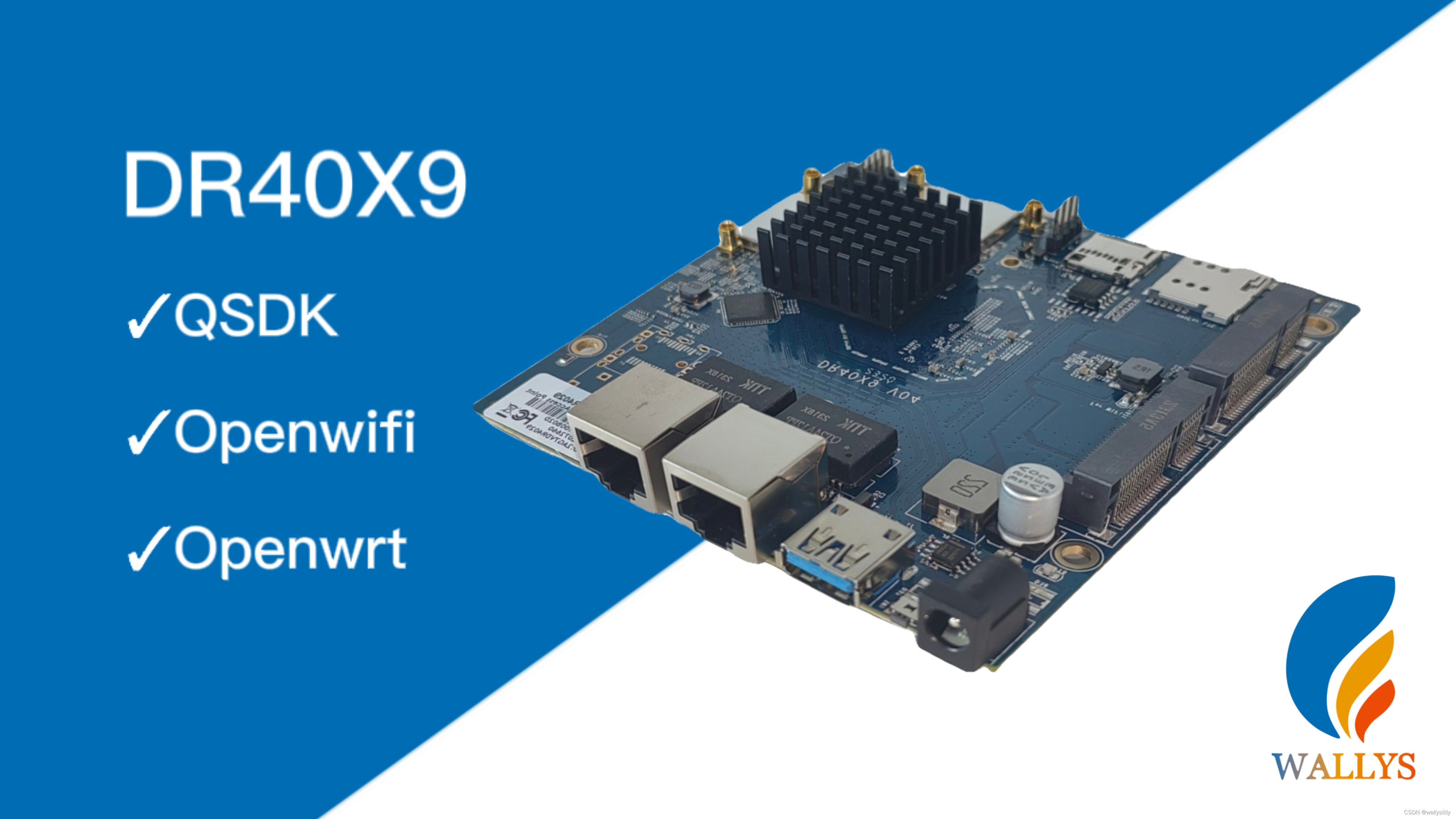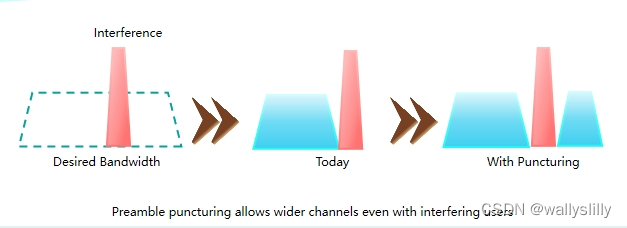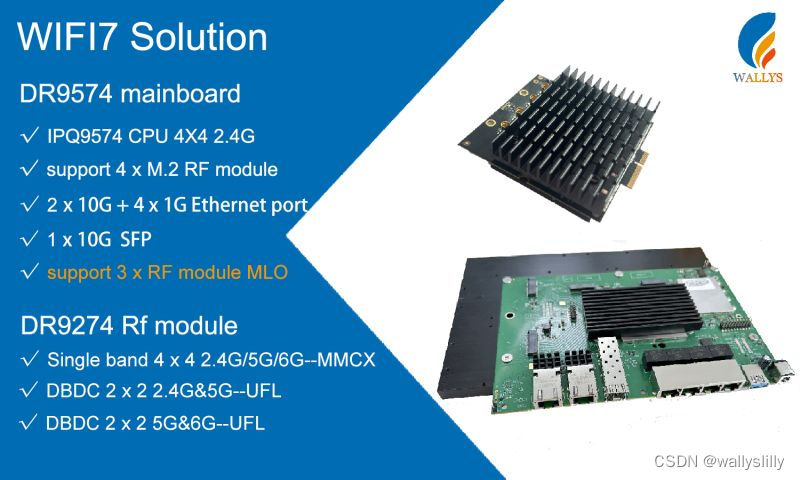IPQ5332 vs IPQ4019: Upgrading to WiFi 7 or Staying with WiFi 5?
In the realm of industrial networking, choosing the right router can profoundly impact operations, efficiency, and future scalability. With advancements in wireless technology, the decision between upgrading to WiFi 7 or sticking with WiFi 5 routers like the IPQ5332 and IPQ4019 from Wallys becomes pivotal. Let's explore the key factors to consider when deciding whether to switch to WiFi 7 or stay with WiFi 5.
IPQ5332: Embracing WiFi 7 for Enhanced Performance
The IPQ5332 chipset powers routers like the Wallys DR5332, offering cutting-edge WiFi 7 capabilities:
-
Tri-Band Connectivity: Utilizing 2.4GHz, 5GHz, and 6GHz bands, WiFi 7 provides increased bandwidth and reduced interference, crucial for data-intensive applications.
-
Advanced MU-MIMO and OFDMA: These technologies optimize spectrum utilization, enabling simultaneous communication with multiple devices and enhancing network efficiency.
-
High Throughput and Low Latency: Ideal for real-time operations and applications requiring high-speed data transfer, WiFi 7 ensures minimal delays and maximum performance.
-
Future-Proofing: Support for 320 MHz channels and Multi-Link Operation (MLO) prepares networks for future scalability and evolving technological demands.
Use Case: The IPQ5332 is tailored for industries demanding robust, low-latency connectivity, such as automation, IoT deployments, and environments requiring stringent data security.
IPQ4019: Reliable WiFi 5 Performance
The IPQ4019 chipset powers routers like the Wallys DR4019, providing dependable WiFi 5 capabilities:
-
Dual-Band Connectivity: Operating on 2.4GHz and 5GHz bands, WiFi 5 offers sufficient performance for standard industrial applications.
-
MU-MIMO Support: Efficiently handles multiple devices simultaneously, though not as advanced as WiFi 7.
-
Cost-Effectiveness: Provides a budget-friendly solution suitable for industries with existing infrastructure and moderate network demands.
Use Case: Ideal for industries where current network requirements are adequately met, and budget considerations play a significant role in decision-making.

Choosing Between IPQ5332 and IPQ4019
Performance Requirements: Evaluate the bandwidth, latency demands, and scalability needs of your applications. WiFi 7 (IPQ5332) excels in high-performance environments requiring robust connectivity and future scalability. WiFi 5 (IPQ4019) offers reliable performance for standard industrial applications with budget constraints.
Future-Proofing: Consider future expansion plans and technological advancements. WiFi 7's advanced features ensure readiness for evolving network demands, making it suitable for long-term investments.
Budget Considerations: While WiFi 7 offers superior performance, WiFi 5 provides a cost-effective solution for industries with limited budgets and stable network requirements.

Conclusion
Choosing between IPQ5332 (WiFi 7) and IPQ4019 (WiFi 5) routers hinges on your specific industrial requirements. For industries needing high throughput, low latency, and future scalability, upgrading to WiFi 7 (IPQ5332) like the Wallys DR5332 offers significant advantages. Conversely, sticking with WiFi 5 (IPQ4019) such as the Wallys DR4019 is ideal for industries where current network capabilities suffice, and budget considerations are paramount. Assess your operational needs and future growth plans carefully to make an informed decision that aligns with your industrial networking goals.

Email:sales1@wallystech.com





















 6152
6152

 被折叠的 条评论
为什么被折叠?
被折叠的 条评论
为什么被折叠?








